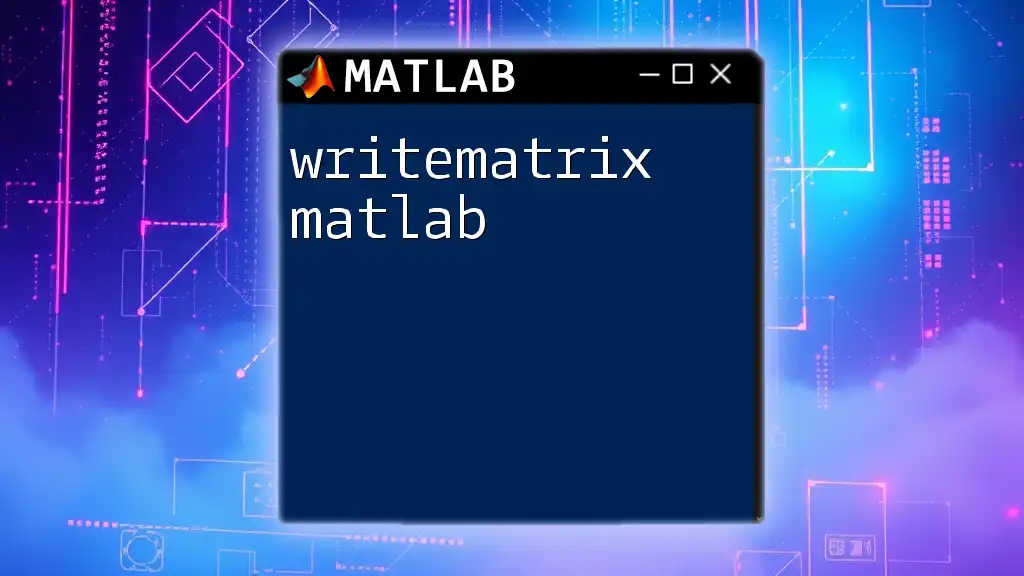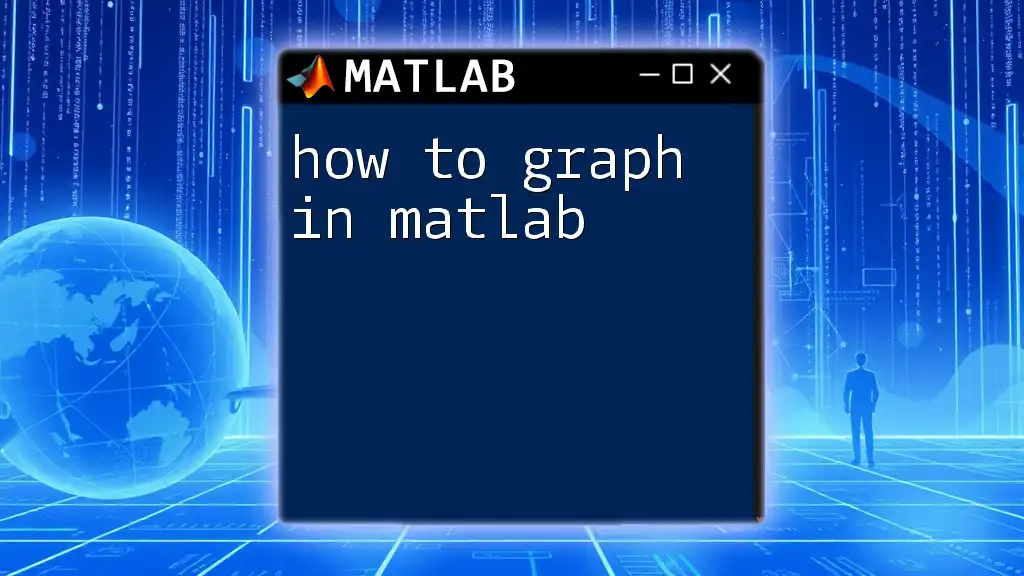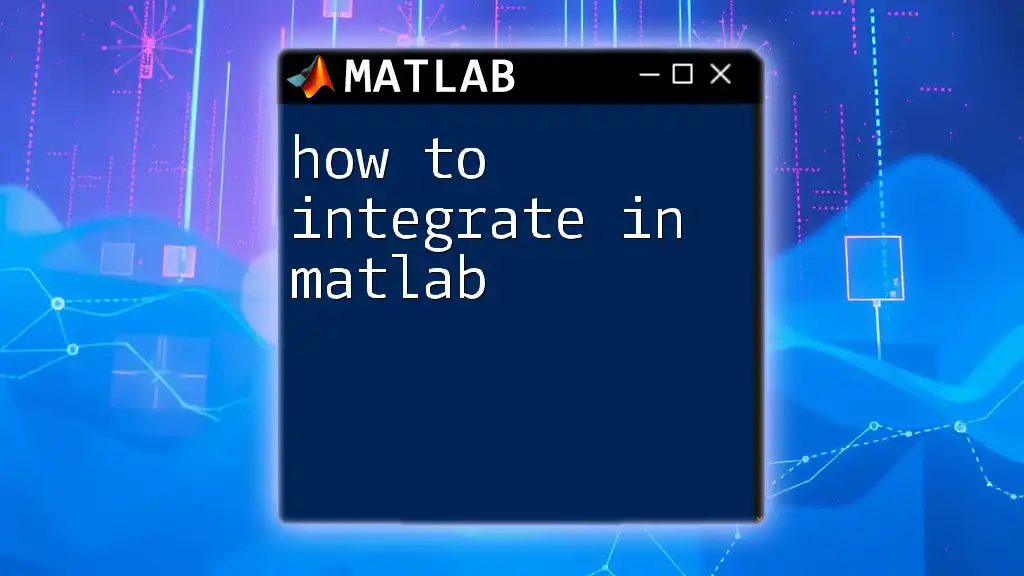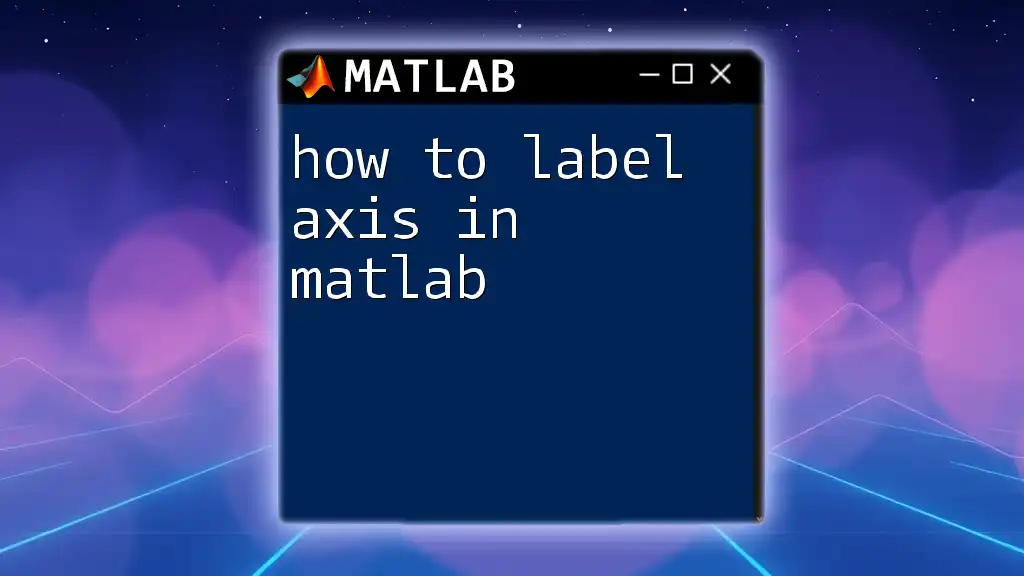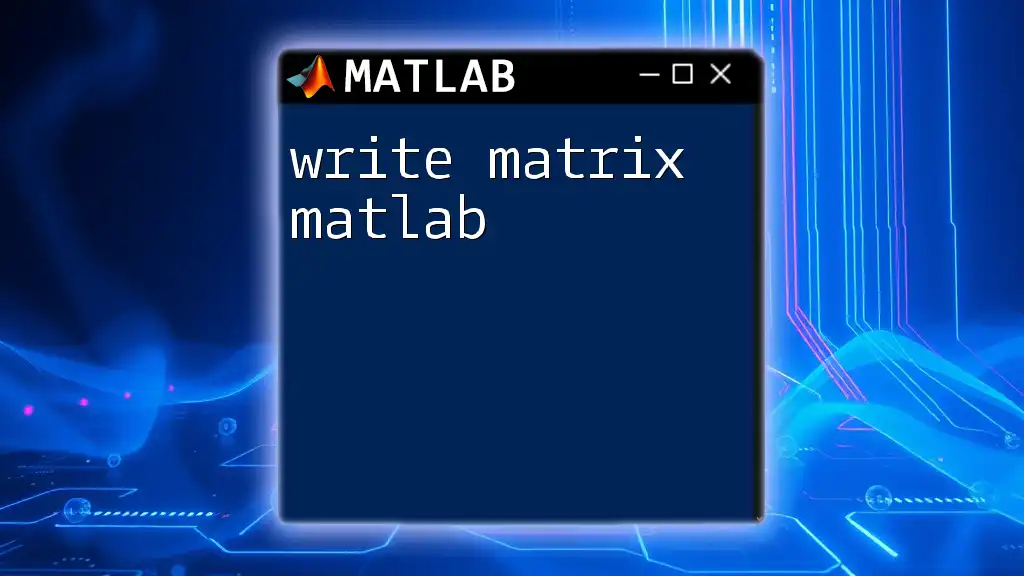In MATLAB, you can form a matrix by using square brackets to arrange the elements in rows and columns, separating them with spaces or commas and using semicolons to denote new rows.
Here’s a code snippet to create a 2x3 matrix:
A = [1 2 3; 4 5 6];
Understanding Matrices
What is a Matrix?
A matrix is a two-dimensional array of numbers organized in rows and columns. Matrices serve as fundamental structures in MATLAB, making it indispensable for tasks in scientific computing, engineering, and data analysis. In MATLAB, the first dimension refers to the number of rows, while the second dimension refers to the number of columns.
Data Types in Matrices
MATLAB supports various data types within matrices, such as:
- Numeric Matrices: Contain numbers (integers, floats).
- Character Matrices: Store characters and strings.
- Logical Matrices: Hold binary values (true/false).
Understanding these data types is crucial as it impacts the operations you can perform on the matrices.
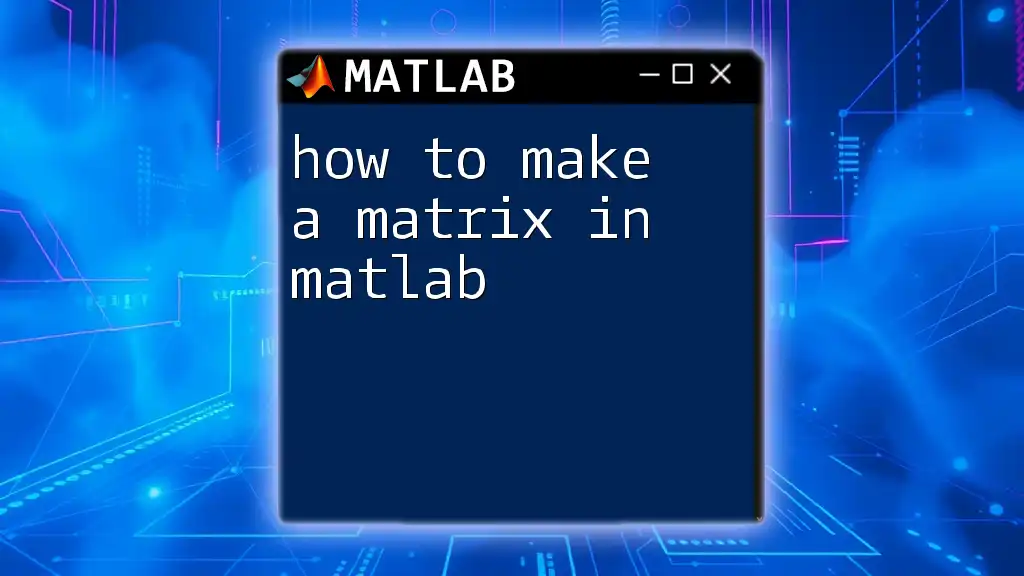
Creating Matrices in MATLAB
Using Square Brackets
MATLAB allows you to create matrices using square brackets. This is the most intuitive method.
Creating Row Vectors
To form a row vector, separate the elements with spaces or commas. For example:
row_vector = [1 2 3 4 5];
In this case, `row_vector` will contain five elements. The interpretation is straightforward: each number corresponds to an element in a single row.
Creating Column Vectors
For a column vector, separate the elements with semicolons:
column_vector = [1; 2; 3; 4; 5];
Here, each number is placed in its own row, creating a vertical arrangement.
Creating 2D Matrices
You can easily form a 2D matrix by combining row vectors with semicolons. For instancing:
matrix_2D = [1 2 3; 4 5 6; 7 8 9];
In this expression, 'matrix_2D' comprises three rows and three columns.
Using Functions
zeros, ones, and eye Functions
MATLAB provides built-in functions to create matrices quickly.
Creating a Zero Matrix: The `zeros` function creates a matrix full of zeros. For example:
zero_matrix = zeros(3, 4);
This code snippet results in a 3x4 matrix filled with zeros. Zero matrices are often essential in initializing variables.
Creating a Ones Matrix: Alternatively, the `ones` function generates a matrix filled with ones:
ones_matrix = ones(2, 3);
This yields a 2x3 matrix populated with ones, useful in operations where a default value is required.
Creating an Identity Matrix: The `eye` function creates an identity matrix, which has ones on its diagonal and zeros elsewhere:
identity_matrix = eye(4);
This results in a 4x4 identity matrix. Identity matrices are pivotal in linear algebra, notably in matrix inversions.
Using the rand Function
If you need a matrix filled with random numbers, MATLAB's `rand` function is invaluable.
Example for generating a 3x2 matrix of random values:
random_matrix = rand(3, 2);
The numbers produced will be in the range \(0\) to \(1\) and can be useful for simulations, data modeling, and algorithms that rely on randomness.
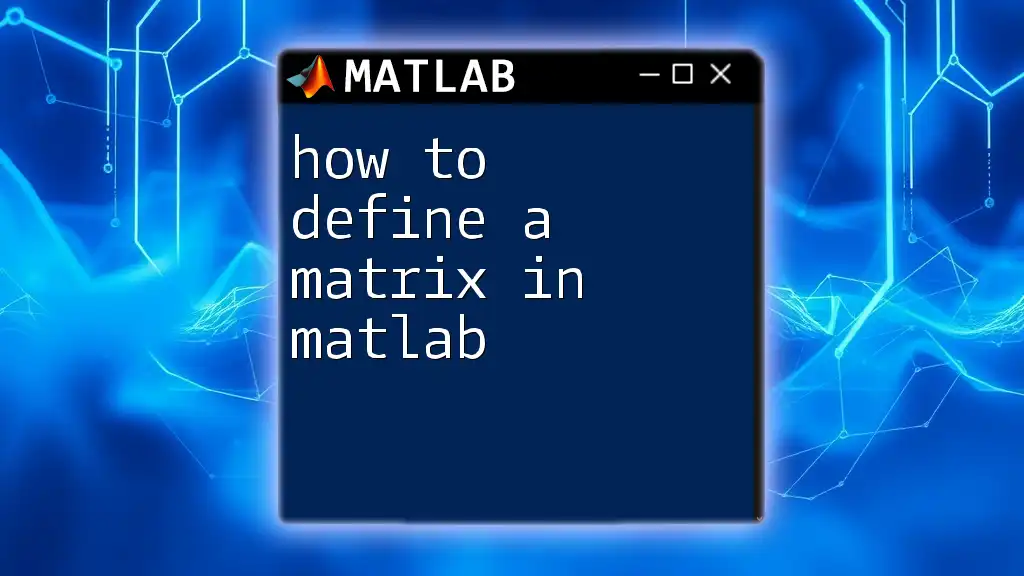
Manipulating Matrices
Reshaping Matrices
The `reshape` function allows you to change the dimensions of a matrix while retaining its data.
For example:
original_matrix = [1 2 3 4 5 6];
reshaped_matrix = reshape(original_matrix, 2, 3);
In this case, `reshaped_matrix` will transform into a 2x3 matrix. Reshaping is commonly applied when preparing data for analysis or visualization.
Concatenating Matrices
Horizontal Concatenation
You can concatenate matrices horizontally using square brackets. For instance:
A = [1 2 3];
B = [4 5 6];
C = [A, B];
Here, `C` will result in `[1 2 3 4 5 6]`. This operation is valuable when combining datasets.
Vertical Concatenation
For vertical concatenation, you can utilize semicolons:
D = [A; B];
In this example, `D` will be a 2x3 matrix formed by stacking `A` and `B`. This functionally blends different datasets, facilitating their analysis.
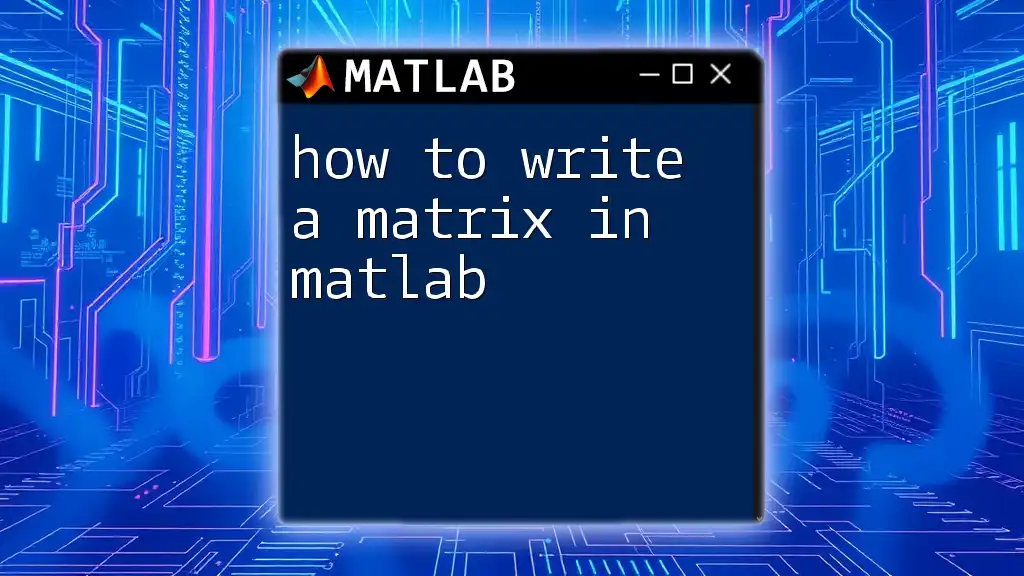
Accessing Matrix Elements
Indexing Basics
Accessing elements within a matrix can be performed using indexing in MATLAB. Each element is accessible using its row and column position, written as:
element = matrix_2D(2, 3);
This retrieves the element found in the second row and third column of `matrix_2D`.
Accessing Rows and Columns
To access entire rows or columns, use the colon operator (`:`).
For example, to obtain the second row:
row_data = matrix_2D(2, :);
Conversely, to access an entire column:
column_data = matrix_2D(:, 3);
Such techniques are vital for managing and manipulating data efficiently.
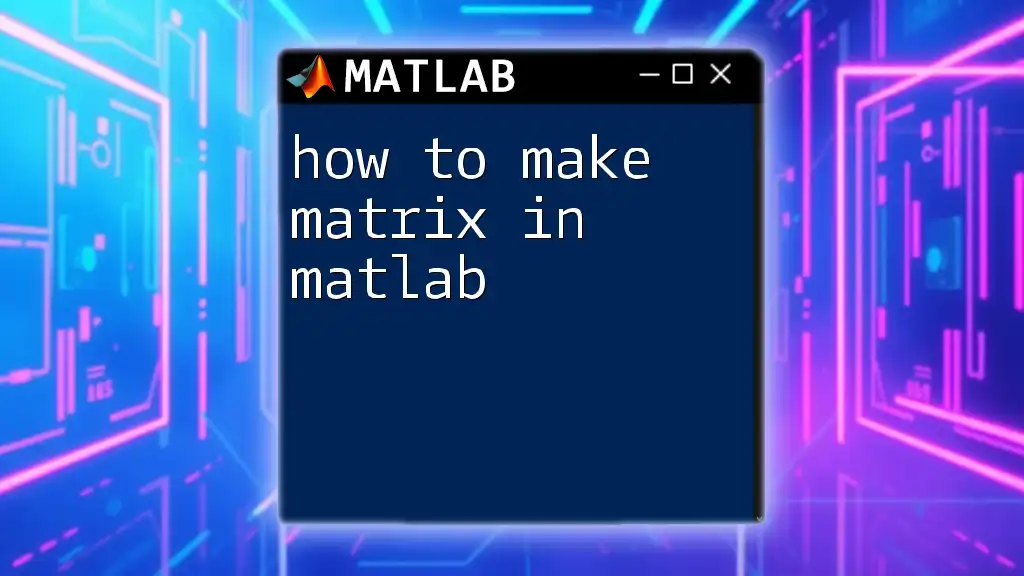
Operations on Matrices
Basic Arithmetic Operations
MATLAB facilitates simple arithmetic on matrices, including addition, subtraction, multiplication, and division.
A = [1 2; 3 4];
B = [5 6; 7 8];
sum_matrix = A + B;
product_matrix = A * B;
Important: When performing multiplication, ensure dimension compatibility; otherwise, MATLAB will return an error.
Matrix Transpose
To transpose a matrix, use the apostrophe (`'`) operator:
transposed_matrix = A';
Transposing is essential in linear algebra, particularly when working with certain mathematical operations like dot products.

Conclusion
In summary, knowing how to form a matrix in MATLAB involves understanding the essential commands and functions that facilitate matrix creation, manipulation, and operations. By practicing these commands, you will enhance your ability to perform complex calculations and data analyses promising success in your journey through MATLAB.
Explore these operations, engage with the MATLAB documentation, and actively practice to solidify your understanding. Stay tuned for more tutorials to master your MATLAB skills!
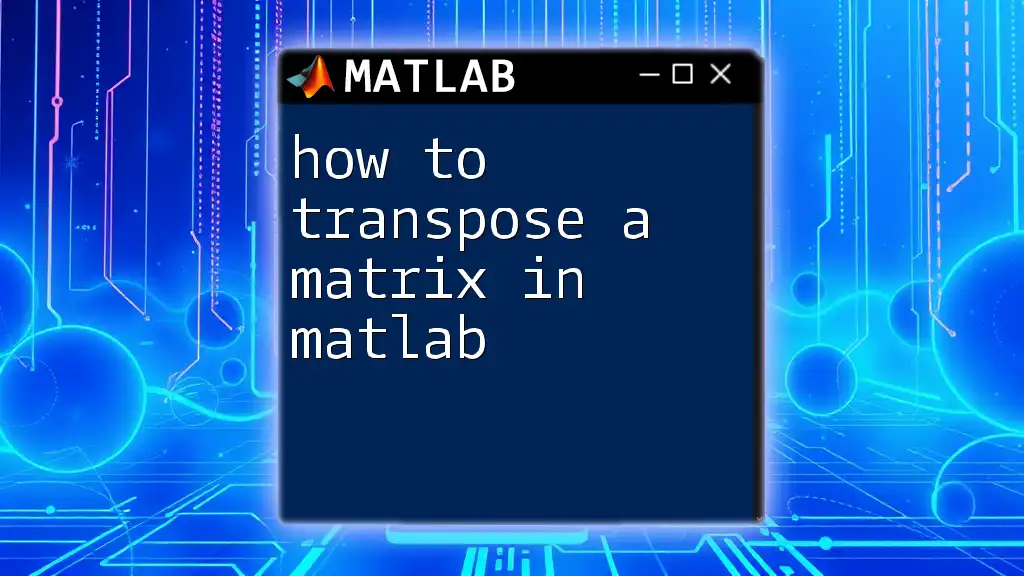
Additional Resources
For further exploration, consider delving into official MATLAB documentation, which provides comprehensive guidelines and examples. Check out recommended books and online courses to deepen your knowledge, and subscribe to our newsletter for ongoing tips and techniques about MATLAB usage!










